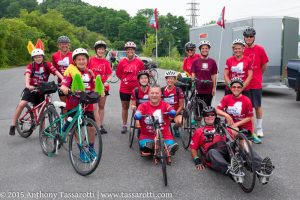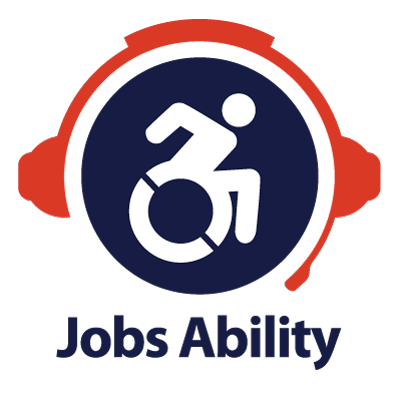Media Uncomfortable with Disability
January 10, 2017New York State Weekly Job Posting JANUARY 19, 2017
January 25, 2017Our Ability is excited to post this important press release. We can’t wait to assist this effort!
“Our Ability is thrilled with the Governor’s announcement today,” Doug Hamlin stated. “It is among our highest priorities to have the most people, of all abilities, enjoy the beauty and history of our great State!”

Build 350 New Miles of Trail to Create Largest State Multi-use Trail Network in the Nation
750-Mile Trail Network Will Connect Lake Erie to the Capital Region and the New York Harbor to Canada
New Mobile App to Launch, Connecting Travelers with New York Trails and Attractions
Governor Andrew M. Cuomo today proposed completing the Hudson River Valley Greenway and Erie Canalway trails by 2020 to create the Empire State Trail, the largest state multi-use trail in the nation. To achieve this, the state will develop 350 miles of new trail in three phases to create a 750-mile pathway for hiking and biking along scenic vistas and through charming, historic communities. The Empire State Trail will span much of the state, from the New York Harbor up through the Adirondack Mountains to the Canadian border – and from the shores of Lake Erie along the historic Erie Canal to the heart of the Capital Region.
“The scenic natural beauty that spans every corner of this state is key to our prosperity, vital to our future and part of who we are as New Yorkers,” Governor Cuomo said. “The Empire State Trail, once completed, will be the nation’s largest state multi-use trail network, providing residents and visitors alike unprecedented access to New York’s outdoor treasures, driving tourism and economic activity to communities across the state and helping to protect our environmental resources for generations to come.”
New York’s existing Hudson River Valley Greenway and the Erie Canalway are two of the most renowned multi-use trailways in the United States, but both trails remain unfinished with a number of gaps across the state. Currently, the Hudson River Valley Greenway is nearly 50 percent complete and crosses the Appalachian Trail, spanning over 260 miles between the Manhattan Battery and Lake George. The trail closely, and in many places parallels State Bike Route 9, which extends the Greenway an additional 130 miles along Lake Champlain to the Canadian border. The Hudson River Valley Greenway generates more than $21 million in economic impact annually from visitors stopping in communities along the trails.
The Erie Canalway is nearly 80 percent complete and runs approximately 360 miles along the storied Erie Canal, connecting Buffalo to Albany. The Governor’s commitment to complete this trail coincides with the bicentennial of the Erie Canal, as construction of the engineering marvel begin in 1817. Each year, approximately 1.5 million people use the Erie Canalway Trail along the historic Erie Canal, resulting in an estimated $253 million in economic activity from visitor spending. The Buffalo-Pendleton segment is the most heavily used part of the Canalway Trail with approximately 350,000 annual users. With this proposal, remaining gaps will be completed, connecting the two trails to establish the New York’s Empire State Trail.
Once the Empire State Trail is complete, the trails will attract more hikers, bikers, and cross country skiers than ever before and provide access to destinations, heritage areas, and historic sites and districts including:
Hudson River Valley Greenway
- Battery Park, NYC· Walkway Over the Hudson, Poughkeepsie· Olana State Historic Site, Hudson· Martin Van Buren National Historic Site, Kinderhook· Schodack Island State Park, Schodack Landing· Saratoga National Battlefield, Stillwater· Fort Ticonderoga, Ticonderoga
Erie Canalway Trail
- Theodore Roosevelt Inaugural Historic Site, Buffalo· Buffalo State Park, Buffalo· The Salt Museum on Onondaga Lake, Liverpool· The Montezuma National Wild Refuge, Seneca Falls· The Great New York State Fair, Syracuse· Oriskany Battlefield State Historic Site, Oriskany· Fort Stanwix National Monument, Rome
This extensive trail network will enhance community connectivity and support healthy lifestyles by providing both urban and rural communities access to endless outdoor recreational opportunities. These long distance destination trails are economic drivers that can generate $1.5 – 5 million in annual economic impact for surrounding communities. Additionally, this trail network is expected to support an estimated 9.6 jobs for every $1 million invested, and every dollar will yield $3 in direct medical benefits for surrounding communities. The trails will also draw tourists from around the world to explore New York’s striking landscapes and rich history, while enjoying local bed and breakfasts, hotels, restaurants, wineries, breweries, farmsteads, and cultural attractions along the way.
Empire State Trail Website and Mobile App Launch
A new trail website and mobile app will launch to further connect New Yorkers and visitors to the state’s great outdoors. Both the website and app will feature a list of greenways, trails with hiking descriptions, and their level of difficulty. The app will allow users to find services and attractions nearby using location services with the option to share the user’s exact location with friends, or first responders, in the case of an emergency. Social sharing options will also be available, to share photos on Instagram, Facebook and Twitter. A live tour map, walking and driving directions, are available as well as an elevation reader that lets users know when trails cross hills and mountains.
The trail system will provide travelers access to a number of signature attractions, all of which can be found on the website and mobile app, including Battery Park, Walkway Over the Hudson, Corning Preserve, Lake George, Schenectady Rivers Casino, the Erie Canal Museum, the Buffalo Naval Military Park, local breweries, and other lodging accommodations and family-friendly destinations found along the Empire State Trail.
“Parks, historic sites, and heritage areas are the very fabric of our local communities and the Empire State Trail will further connect these treasured resources with all New Yorkers, neighbors and friends,” said New York State Parks Commissioner Rose Harvey. “Governor Cuomo is rejuvenating the state park system and now with the creation of the Empire State Trail we are deepening the connection and sharing many of these wonderful treasures and all it takes is a bike ride or casual stroll.”
“New York’s natural resources are truly world class destinations and through Governor Cuomo’s leadership, the new Empire State Trail will establish important connections to offer residents and visitors even more opportunities to experience all the state has to offer,” said New York State Department of Environmental Conservation Commissioner Basil Seggos. “I look forward to working with our partners in State Parks, to expand and enhance marketing of all the outdoor adventures one can have throughout the state, and continuing to help communities across the state capitalize on the economic potential of outdoor recreation.”
New York State Canal Corporation Director Brian Stratton said, “Tens of thousands of people already use the Canal trail year-round for hiking, biking, jogging and cross-country skiing. I’m beyond thrilled that Governor Cuomo has proposed completing the trail along the entire length of the Erie Canal. Now, more people will be able to enjoy all this iconic waterway has to offer as we celebrate the canal system’s bicentennial in 2017.”
